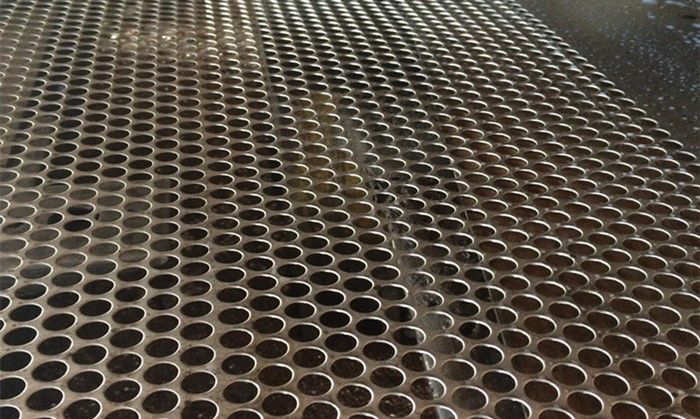Understanding the Relationship Between Hole Diameter and Hole Spacing in Stainless Steel Perforated Sheets
Source:www.cn-psp.cnAuthor:河北森驰公司 Last updated:2025-06-14 16:46:34 Browse:
Stainless steel perforated sheets are widely used in industries and architectural applications due to their high strength, corrosion resistance, visual appeal, and excellent ventilation and light transmission capabilities. During the design and application process, the proper configuration of hole diameter and hole spacing is crucial. It directly affects the sheet’s structural stability, visual effect, airflow, strength, and production cost. Therefore, understanding the relationship between hole diameter and hole spacing is essential when choosing the right stainless steel perforated sheet for your project.
1. What Are Hole Diameter and Hole Spacing?
Hole diameter refers to the width of each perforated hole on the sheet, usually measured in millimeters (mm). Typical diameters range from 0.2mm to as large as 300mm.
Hole spacing, also known as center-to-center spacing or pitch, is the distance between the centers of two adjacent holes. Hole spacing can be customized and significantly impacts the sheet’s open area ratio and structural integrity.
2. Relationship Between Hole Diameter and Open Area
The open area represents the ratio of total hole area to the overall surface area of the perforated sheet. This metric determines how much air, light, or liquid can pass through the sheet.
When the hole diameter increases, the total hole area increases, resulting in a higher open area, which allows more ventilation or light.
Conversely, a smaller hole diameter reduces the open area, enhancing the structural strength while limiting flow-through.
For example, with uniform hole patterns, increasing the hole diameter from 2mm to 4mm can significantly increase the open area, which is critical for ventilation or acoustic absorption applications.
3. Hole Diameter Must Match Sheet Thickness – The “Minimum Hole Principle”
In perforation manufacturing, there is a general rule known as the minimum hole principle, which states that the hole diameter should not be smaller than the thickness of the sheet.
For example:
If a stainless steel sheet is 3mm thick, the minimum feasible hole diameter is also 3mm.
Attempting to perforate 2mm holes into a 3mm sheet can lead to tooling wear, jagged edges, or material cracking.
This principle is influenced by production capabilities and ensures that the final perforated sheet remains structurally sound and visually clean.

Stainless steel perforated sheet
4. How Hole Spacing Affects Sheet Flatness and Deformation
Hole spacing plays a key role in the overall flatness and deformation behavior of a stainless steel perforated sheet during and after production.
In general:
Hole spacing should be at least 1.5 times the sheet thickness to maintain good flatness.
If the spacing is too tight, stress concentrations during punching may lead to warping, buckling, or edge distortion.
Increased spacing helps maintain flatness but may reduce the open area. Designers must balance the need for airflow or transparency with the mechanical stability of the sheet.
5. Application-Specific Recommendations for Hole Diameter and Spacing
Different applications require different configurations of hole diameter and spacing in stainless steel perforated sheets:
For Decorative Panels: Visual patterns take priority. Hole diameter and spacing can vary to create design effects. Aesthetic quality may outweigh airflow needs.
For Ventilation or Cooling Use: A higher open area is desired. Choose larger hole diameters with reasonably close spacing for maximum efficiency.
For Acoustic Panels: Use small, evenly distributed holes. This promotes better sound absorption and wave diffusion.
For Filtration or Sieving: High precision is key. Hole diameter must match particle sizes, and spacing must be dense but within the limits of sheet thickness.
Each use case should be evaluated for its balance of strength, flow, appearance, and cost.
6. Conclusion
In summary, while hole diameter and hole spacing may seem like simple parameters, their relationship plays a pivotal role in the performance, durability, and appearance of stainless steel perforated sheets. By carefully considering the thickness of the sheet, the production method, and the intended application, you can select the ideal configuration that balances open area, flatness, and mechanical integrity.
If you need assistance selecting or customizing the right perforated stainless steel sheet for your project, feel free to contact our expert team for tailored support and technical advice.
